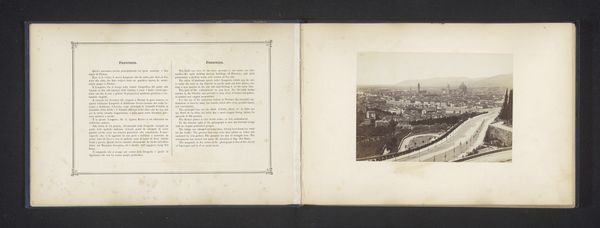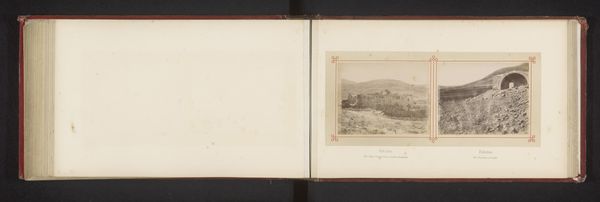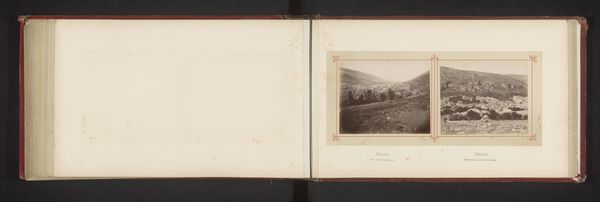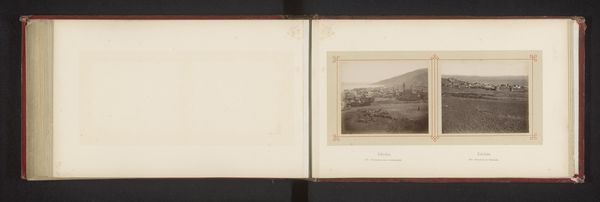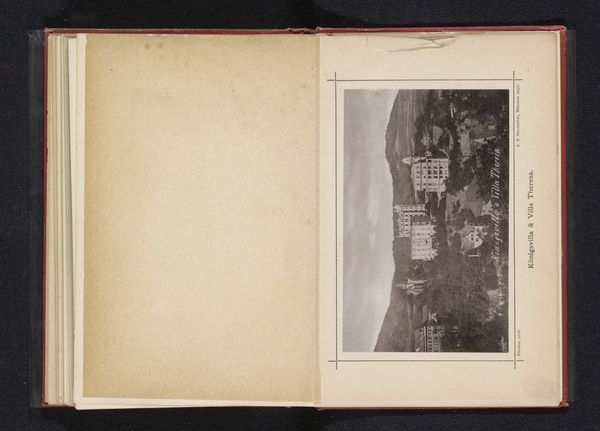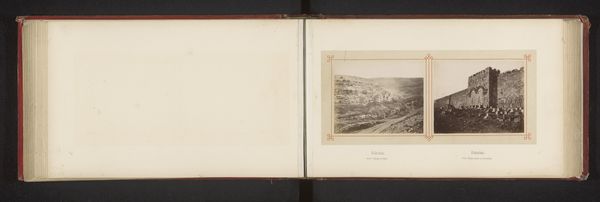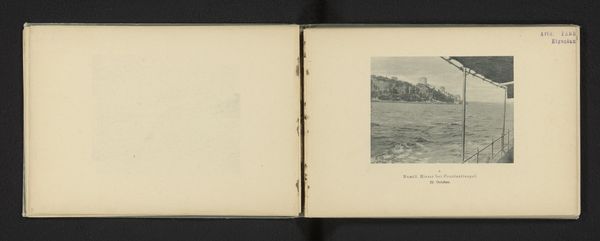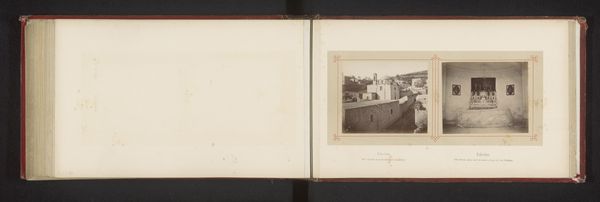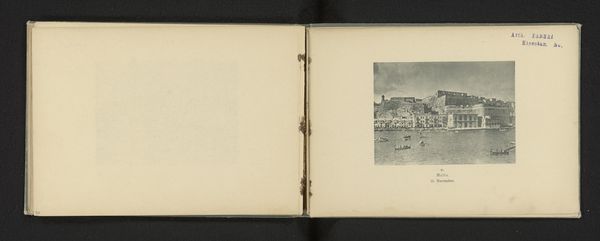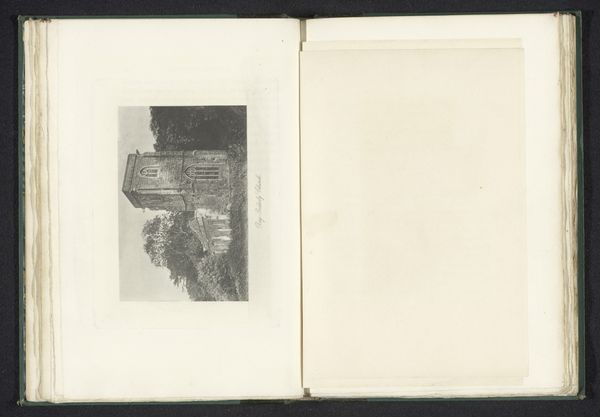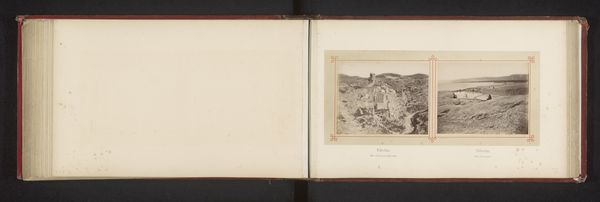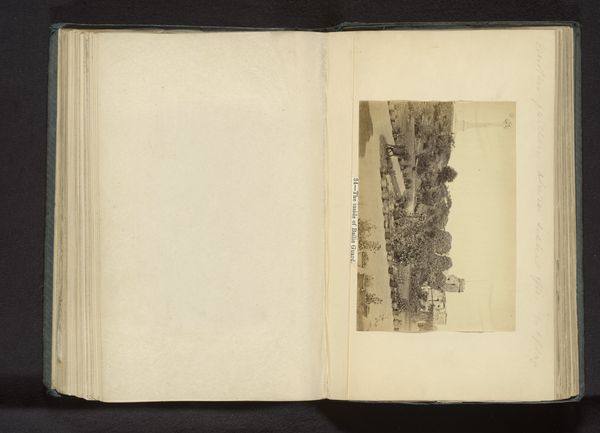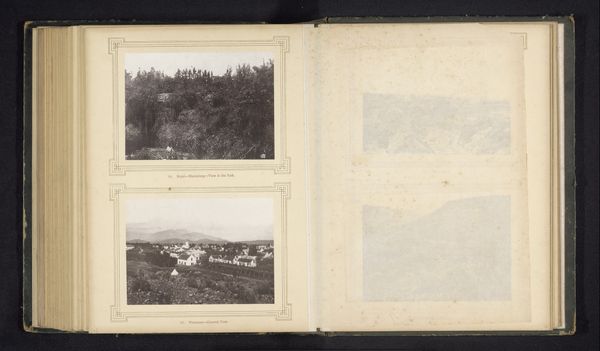
print, photography, albumen-print
# print
#
landscape
#
photography
#
orientalism
#
albumen-print
Dimensions: height 76 mm, width 99 mm
Copyright: Rijks Museum: Open Domain
Curator: Looking at this photograph, "Nablous. The ancient Shechem, or Sychar," taken by Francis Bedford before 1865, it's striking how timeless the scene appears. The sepia tones lend it a sense of history. Editor: Timeless, yes, but also imposing. The photograph, although seemingly straightforward, possesses this weight, doesn't it? There's a starkness to the city against the backdrop of those barren hills. Curator: That starkness underscores the photographic technique of the period; specifically, the way that albumen prints capture light and shadow to evoke cultural memory. Nablus, or Shechem as it was known in antiquity, carries immense religious and historical significance. The photographer clearly frames it as the symbolic representation that it is. Editor: It's intriguing to consider that Bedford might have understood his role not simply as a photographer, but also as a recorder of socio-political landscapes and ideologies. His composition seems to position the Western gaze onto this historical land, wouldn't you agree? The careful placement suggests an almost documentary purpose that would serve colonial and Orientalist ideologies of the era. Curator: Exactly. He offers a view but filters it for a Western audience, influencing the collective unconscious. It’s as much a portrait of a place as it is a construct for Western consumption, layering on cultural associations of biblical importance, creating symbolic resonance for viewers unfamiliar with the city itself. Editor: It prompts contemplation on how visual representations shape historical narratives. What did 19th-century audiences make of this carefully curated depiction of Nablus, versus lived experiences in that society? What were the politics embedded in showing *this* view? Curator: Yes, images like these solidified orientalist views and shaped popular understanding for decades to come, contributing to complex layers of inherited memory. The power of an image rests not just in the scene it depicts, but the narratives it evokes over time. Editor: Precisely. Bedford’s "Nablous" shows us just how deeply art intertwines with the social and political narratives. Food for thought on the ever-evolving public role of art.
Comments
No comments
Be the first to comment and join the conversation on the ultimate creative platform.
